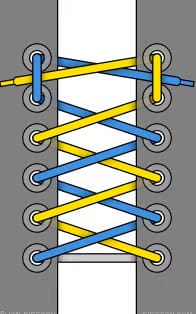- Smart Stride
- Posts
- Don't make the mistakes I made
Don't make the mistakes I made
Buying a new shoe should be easy
Buying running shoes should be easy, right?
You go to a running store, get a recommendation, and you’re good to go.
That’s what I thought back in March 2019 when I bought my very first pair: the Brooks Ghost 11. A basic all-rounder, recommended by the staff. They felt good, and I ran well in them. So far, so good.
Soon followed a period of training till injury, not running at all for a few months, building back up and getting injured again until I dropped running all toghether.
Apparently, there was more to running than just heading out the door and trying to run as hard as possible.
The comeback, and another mistake
In 2021, after the lockdowns, I decided to give running another shot. I figured I’d need a new shoe, something similar to the Ghost 11. I blatantly ended up falling for the Hoka hype, buying the Rincon 3.
Online.
Terrible choice.
They didn’t fit my running gait, felt unstable on every run, and killed my motivation. But the internet said they were supposed to be similar…
That experience taught me a valuable lesson: never skip trying shoes in person before you buy.
A shoe might look perfect on paper or get great reviews, but if it doesn’t match your foot shape, gait, or goals, it won’t work.
Always check these 3 things when buying running shoes:
Does this shoe match my training goals?
Daily mileage, racing, trail running — each needs something different.Is it the right size?
Make sure there’s a half a thumb-width of space in front of your longest toe.Any hotspots or pressure points?
Even slight discomfort in the store can become painful after 10km.
These checks alone can save you from injuries and wasted money.
Why a shoe rotation is a game-changer
Running in just one pair loads the same tissues in the same way every run. A simple rotation:
Reduces repetitive strain
Keeps cushioning fresh longer
Makes training more fun
Here’s my go-to 3-shoe rotation:
✅ A comfortable daily trainer - for most easy miles
✅ A speedy trainer - for intervals & tempo runs (can double as daily)
✅ A carbon-plated super shoe - for races & key sessions
If you run trails: add a fourth trail shoe.
That’s really all you need. Enough to keep your legs fresh up to ~2,000 km per year. With this amount of volume you will end up going trough 3 pairs of shoes anyway, so better use them in conjunction.
Quick fit tip: the heel lock
A heel lock can transform the fit of the shoe.
If you struggle with heel slippage, sliding of the foot, blisters on the tip of the toes or missing some ankle stability, a heel loack will help with this.
The heel lock is a lacing technique used to lock the heel in the back of the shoe to stop excessive movement. This is done by putting the lace from the outside in through the top lace hole. Do this on both sides. Then put the lace over the tongue from above through the loop that you created on the outside of the shoe. Do this on both sides.
Now wiggle the laces, so the laces tighten itself up. You can use a regular knot or double knot to fasten the laces.

Ready to get your next pair right?
Great running shoes won’t make you faster overnight — but they will keep you healthy, motivated, and enjoying your training.
The discount from last week (GIVEAWAY10) is still valid till tommorow 12 PM. Let’s build your perfect rotation together and save you from the mistakes I made.
👉 Claim your discount now at timroozendaal.carrd.co
Stay healthy and run happy!
- Tim 👟